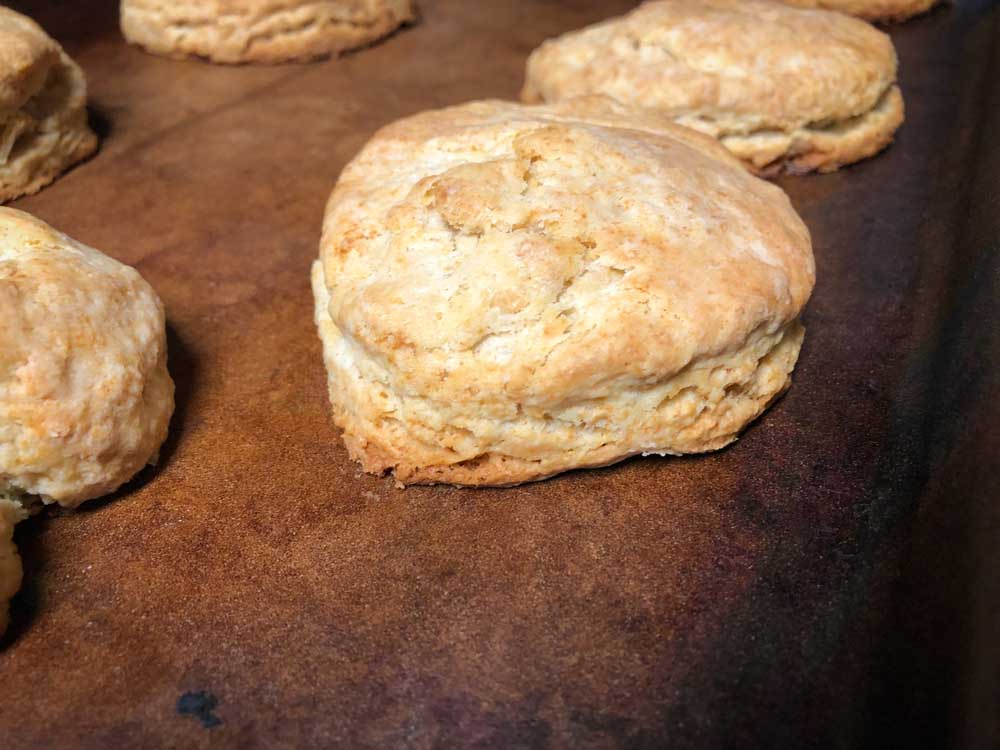Simply splendid sourdough
Published 1:30 am Thursday, May 7, 2020

- The finished sourdough biscuits.
People have been baking like crazy over this quarantine and it shows. There are yeast and flour shortages and it seems like everyone’s Instagram is full of delicious looking cakes and breads. Since people generally have more time on their hands, plus the aforementioned shortage, many are turning to the simple, yet time consuming, sourdoughs.
Whether you’re out to make pizza, a rustic loaf of bread, pancakes or biscuits, sourdough is a lovely little dough that does it all.
For those not versed in all baking terms and techniques, sourdoughs are achieved through the use of a fermented starter that builds up naturally occurring lactobacilli (a non-spore forming bacteria) and yeast in flour.
In order to make those tangy breads and other baked treats, you’ll need a starter.
You can purchase sourdough starters from some stores either fresh or in a powdered form.
If you want to start from scratch, making your own starter really isn’t all that difficult and all you will need is flour, water and a jar to keep it in, and a lot of patience.
Making a starter
First off, it takes several days to make a starter and for it to be able to make a leavened bread, but it only takes a few minutes each day to tend to it.
I followed the recipe from King Arthur Flour to begin my multi-day journey to bread-town.
Here is a pared down version of the kingaurthurflour.com recipe, visit the website for complete details.
Day One:
Combine 1/3 cup of flour with 1/3 cup of water in a glass, crockery, stainless steel or food-grade plastic container at least one quart in size. Stir it all together until dry flour is mixed in. Cover the container loosely and let it sit out at room temperature for 24-hours.
Day Two:
Discard half of the starter (or set aside for other baking later on) then “feed” it by adding 1/3 cup flour and 1/3 cup of water, then stirring it together.
Recover the mix and let it rest on your counter.
Days Three through Five:
The starter should start smelling, well, a bit sour and bubbling.
Now you have to feed it twice a day, as evenly spaced as possible. Each time measure out 1/3 cup of your starter then discard the rest.
Add back in 1/3 cup of flour and 1/3 cup of water to the 1/3 cup of starter you pulled. Mix it together, cover it and let it rest at room temperature.
By the end of day five, the smell should be less intense, “pleasingly acidic” as the website states and should have doubled in volume.
If it hasn’t gotten much bigger, continue feeding and discarding until it has increased and is bubbling well.
Once it shows signs of vigorous activity, you can bake with it. Check the specific recipe you’re using for exactly how much starter you’ll need. There is a chance you may need to keep feeding your yeasty beast.
You can save your starter too. Store it in a refrigerator to use at a later date, King Arthur Flour recommends feeding it once a week.
Discarded starterYou don’t have to throw all your starter out when feeding it.
You can jar up the discards and give it away to friends or bake something else with it.
For instance, serve up a breakfast sandwich or classic biscuits and gravy using your discarded starter.






